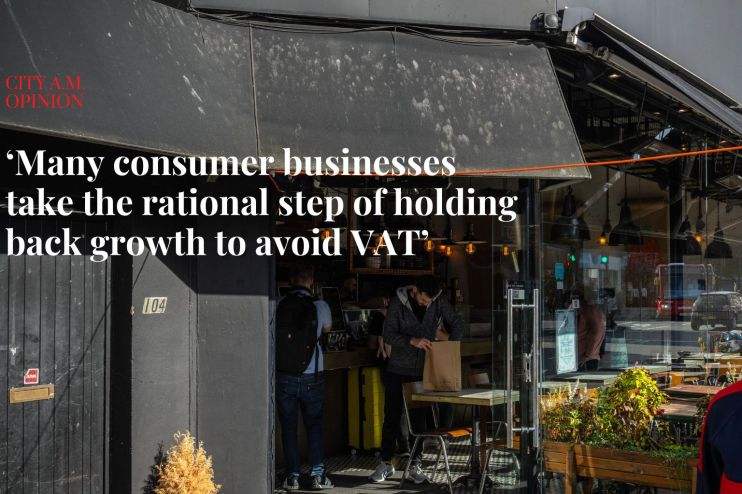The VAT fly trap: how our taxes are keeping growth at a standstill

There are lots of problems with the UK tax system. Perhaps the worst is the way it can stop businesses from growing. Top income tax marginal rates of 70 per cent and above are bad enough, but there’s one problem even more serious than that – the VAT threshold.
Small businesses can ignore VAT. But once their turnover hits £85,000 they have to charge VAT at 20 per cent on everything they sell.
That’s a big problem. A coffee shop that hits £85,000 of turnover will suddenly be charging up to 20 per cent more than its local competitors. That’s a huge problem for them.
So many consumer-facing businesses take the rational, and perfectly legal, step of holding back their growth to keep turnover under £85,000. Coffee shops shut in February. Plumbers turn away work. Electricians don’t take on apprentices. Accountants work separately rather than combining into one business.
HMRC data shows the effect is very large indeed. If you draw a chart of the number of businesses at each pound of turnover, we’d expect a smooth curve dropping from a large number of businesses earning a small amount, to a small number of businesses earning a large amount. We don’t see that at all – instead there’s a bulge just before £85,000, and a massive cliff edge afterwards.
A cynic might think this is tax evasion – people illegally under-reporting their income. But a detailed data analysis from academics at Warwick University suggests this is a real effect – businesses deliberately controlling their growh to avoid the “VAT trap”.
We’ve calculated at least 26,000 businesses are caught in the trap. That’s a problem any government (or opposition party) serious about economic growth should be looking to solve. It’s been plausibly argued this could be part of the UK’s productivity puzzle – the UK’s failure to grow its productivity since the financial crisis.
One obvious answer is to increase the threshold. That would be very expensive in terms of lost VAT, meaning more tax to pay for the rest of us. And it would only make the problem worse – the VAT trap would start to catch businesses that have grown past the embryonic stage.
And, if we look at the rest of the world, we see the UK is outlier – it has the highest VAT threshold in the OECD. Comparable countries tend to impose VAT at around the £30,000 point. That’s important, because at £30,000 we’re not imposing VAT on hobby businesses, but anyone seriously making a living will have to charge VAT. And if everyone is in the same boat then businesses should have nothing to lose from charging VAT.
So a much better answer is to join the rest of the world – reduce the threshold to £30,000. The politics are challenging, but it just might be achievable with three important practical steps:
First, the reduction should be phased over several years, with plenty of notice of the change so that people can prepare.
Second, HMRC should work with third party software providers, so small and micro business have trusted app-based solutions that make VAT compliance as easy as taking photos of your receipts and invoices. We don’t need a big Government IT solution, just openness to the private sector.
Third, and most important, this can’t be seen as a tax grab by government. Everyone should benefit from the change. So every pound of revenue raised by reducing the threshold should be used to reduce the rate of VAT, ultimately to 18 per cent or lower.
I don’t pretend to have the right answers, but I’m confident I have the right questions: why is the UK tax system holding back small businesses, and how can we fix it?